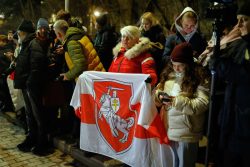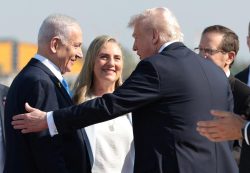Iran – 45 Years Since the Revolution / Clerics Attacked Amid Public Anger with Government; Inflation at 40% Level Under U.S. Economic Sanctions

The Holy Shrine of Hazrate Masoumah is seen in Qom in central Iran on Jan. 28. Even in this holy city for Shiite Muslims, an Islamic cleric had his turban knocked off.
21:20 JST, February 26, 2024
Iran marked the 45th anniversary of the 1979 Islamic Revolution on Feb. 11. This is the first installment of a series examining the current situation of the “revolutionary” state, which pushes back against public discontent with hardline policies.
***
Iran marked the 45th anniversary of the 1979 Islamic Revolution on Feb. 11. This is the first installment of a series examining the current situation of the “revolutionary” state, which pushes back against public discontent with hardline policies.
Mohammad-Hossein Mobaraki, a 61-year-old Islamic cleric in Iran, said it happened in the blink of an eye. He was walking up a stairway at a subway station in northern Tehran in autumn 2022 when a middle-aged man approached him from the front and knocked Mobaraki’s turban off his head as the two passed each other.
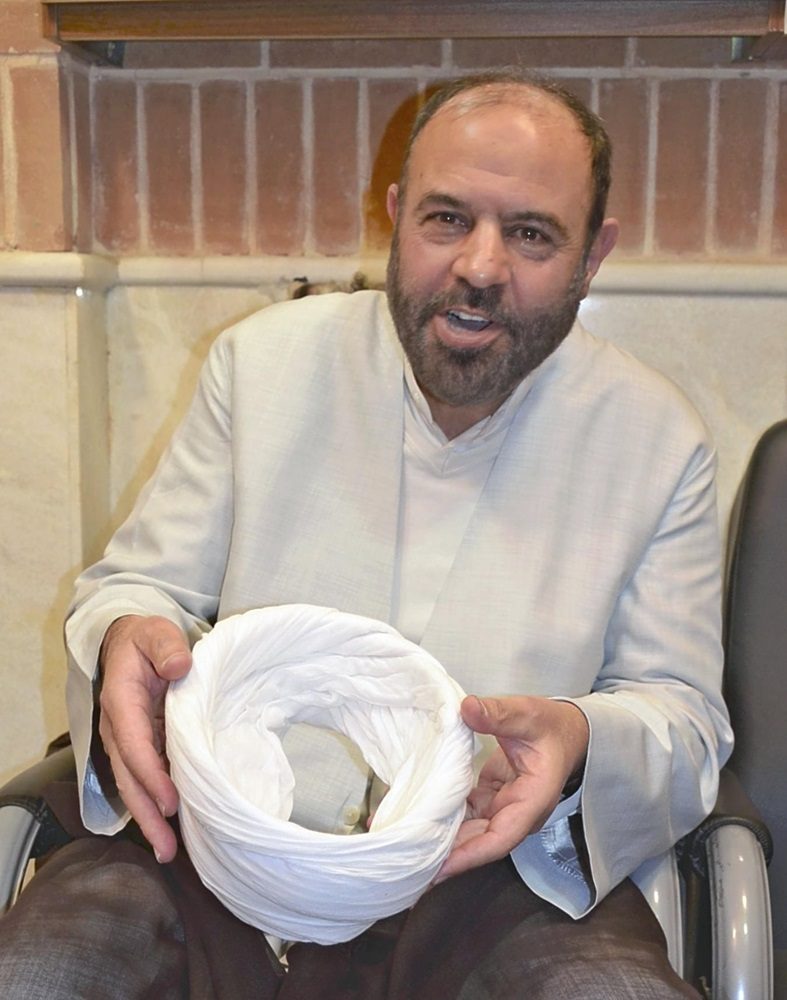
Mohammad-Hossein Mobaraki talks on Jan. 23 about having his turban knocked off.
A boy walking with the man tried to take the dropped turban, but Mobaraki managed to prevent it. The two fled the scene, and he still does not know who they were.
Iran has touted its republic as being governed under “the guardianship of the Islamic jurist” and has adopted a theocratic system. Turbans are a symbol of the clerics who have studied Islamic law at seminaries, and there have recently been an increasing number of physical attacks on clerics in charge of religious events in local communities.
“We’re seen as a part of the administration,” Mobaraki said with a grim expression. Several days before Mobaraki’s turban was knocked off, one of his fellow clerics was stabbed by an unknown man, he said.
In 2022, protest rallies spread nationwide against the government’s policy to force women to wear hijab, or scarves that conceal women’s hair. Since then, video clips of people knocking off clerics’ turbans have become common on social media. Other types of attacks have also occurred.
The country is under economic sanctions and prices have been on the rise, so members of the public may be directing their anger at clerics.
Floodgates of resistance
Iran is under economic sanctions that the United States resumed over suspicions that Iran may be developing nuclear weapons. The Iranian people are struggling with annual inflation at the 40% level on average.
In December last year, when gasoline stations nationwide stopped working due to cyberattacks, Petroleum Minister Javad Owji had to deny rumors that were circulating about a price hike.
Iranians have notably protested in recent years about issues closely related to their daily lives. Rallies were held in 2017 about surging prices, and in 2019 about gasoline price hikes. Protests against the requirement that women wear hijab rapidly expanded to involve people who were discontented with the government’s economic policies.
Once the public’s dissatisfaction with the government surfaced, ordinary Islamic clerics also faced serious problems, as their clothes match those of the people in power.
Moving away from religion
Mobaraki is in charge of daytime prayers at a mosque about a 10-minute walk from the subway station where his turban was knocked off.
Among the thrice-daily prayers, morning prayers were discontinued due to the COVID-19 pandemic, and the mosque’s door was locked. Even before that, only two or three people came to the mosque for the morning prayers.
“The number of people making prayers has been decreasing. This is a bad tendency,” Mobaraki lamented.
He said a follower once told him, “We don’t come to prayers as a protest against you Islamic clerics.”
According to Iran’s Ministry of Culture and Islamic Guidance, only 30.6% of Iran’s 85,000 mosques conduct group prayers three times a day. Sixteen percent hold no group prayers at all.
Saber Rezayi, a 53-year-old businessperson, said: “I embrace [the Islamic] revolution, but I stopped going to mosques three years ago. Copies of conservative and hardline newspapers are displayed on bulletin boards there, and the sermons are all propaganda.”
Trouble even in holy city
Iran’s national religion is Shiite Islam, and Qom, a city in the central part of the country, is the holy site of the religion.
About 60% of Iran’s clerics live in Qom, and it is home to many seminaries. No women without hijab are seen in the city.
However, even a cleric who advocates reform and criticizes the government said he has experienced problems. “I had my turban knocked off about 20 days ago,” said Mohammad-Taghi Fazel-Meibodi, 70. “Now I wear casual clothes except when I attend religious events.”
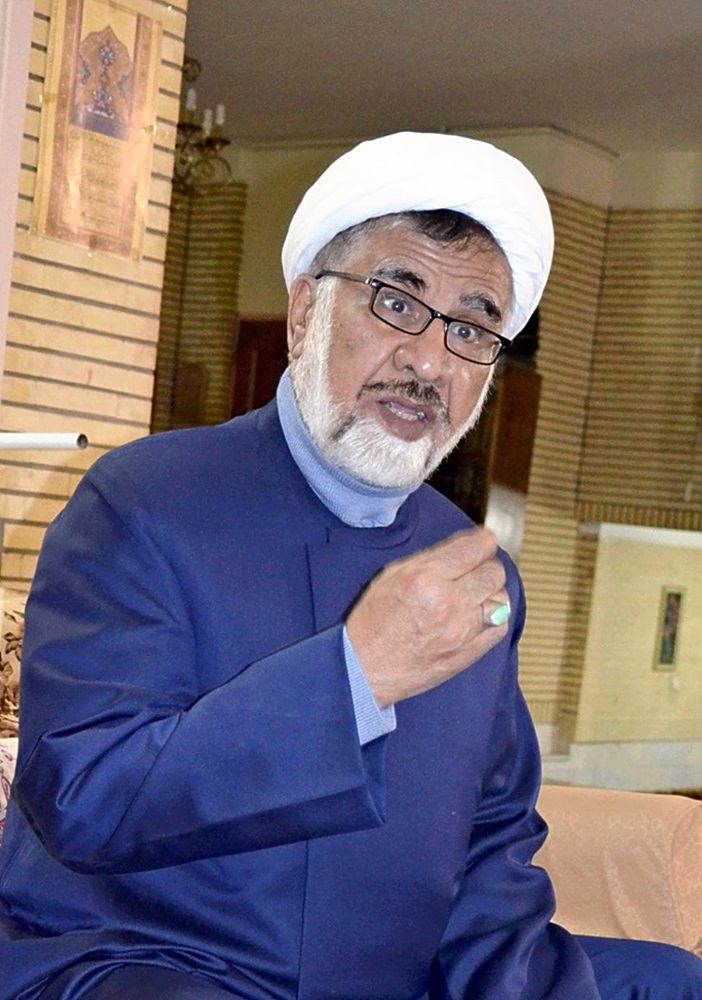
Islamic cleric Mohammad-Taghi Fazel-Meibodi
Fazel-Meibodi added, “If I was on the opposite side, I’d do the same thing.”
“The ideal of the revolution was to abolish the monarchy-based dictatorship and establish a democratic government. But the principles of a democratic government chosen through elections, independence of the three branches of government and freedom of the press, are limited if a religion has power over the government. I was once devoted to the revolution, but I changed my way of thinking,” he said.
Discontent among the public has led people to distance themselves from Islam.
The situation nurtures further oppression by the government. The revolutionary regime is becoming more and more autocratic with no threat to its rule.
‘Export revolution’ in Mideast
Iran has sought to “export revolution” to the world. Yemen’s Houthi rebels, who have repeatedly attacked merchant ships in the Red Sea, and the Shiite Islamist militia Hezbollah of Lebanon can be seen as products of these efforts by Iran.
Iran’s first supreme leader, Ruhollah Khomeini, declared the export of revolution in 1980 on the anniversary of Iran’s Islamic Revolution the year before. Khomeini indicated a policy of supporting the fight against “oppression,” citing anti-Israeli fighting by Palestinians and Lebanese. This is why Shiite Iran and Hezbollah support the Sunni-dominated Palestinian militant group Hamas.
“Exporting revolution has been successful,” said Ghasem Ravanbakhsh, a hard-line Islamic cleric of the Shiite holy city of Qom.
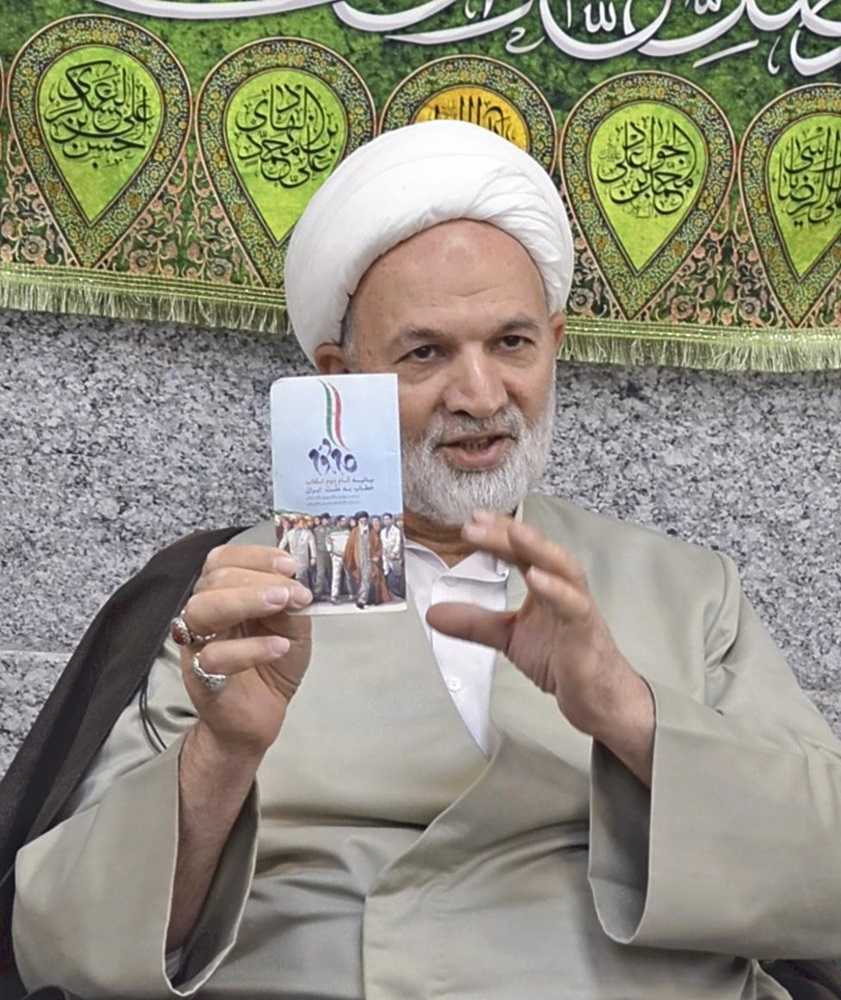
Islamic cleric Ghasem Ravanbakhsh
“The receivers of the revolution are aware that it is their duty to fight oppressors. Resistance forces in the Middle East have been united in eliminating Israeli and U.S. forces,” Ravanbakhsh added.
The Islamic Revolutionary Guard Corps, an elite Iranian military organization, were involved in founding Hezbollah. Influenced by Iran’s revolutionary ideology, Shiite Houthi rebels sent seminary students to Iran’s city of Qom so the students could receive military training from the Revolutionary Guards.
However, a diplomatic source said people in that country were looking at Iran’s military support for groups in other nations with “cold eyes.” Slogans such as “No to Gaza, No to Lebanon” have been shouted during demonstrations in Iran.
"World" POPULAR ARTICLE
-

8 Japanese Nationals Stranded on Indonesia’s Sumatra Island
-

U.S. Senate Resolution Backs Japan, Condemns China’s Pressure
-

China to Impose Sanctions on Shigeru Iwasaki, Former Head of Japan’s Self-Defense Forces, Who Serves as Adviser to Taiwan’s Executive Branch
-

South Korea’s Top Court Dismisses Nippon Steel Appeal in Lawsuit over Requisitioned Worker
-

75% of Myanmar People Reject Army’s Political Involvement, According to Survey Conducted by Aid Organization
JN ACCESS RANKING
-

Tokyo Economic Security Forum to Hold Inaugural Meeting Amid Tense Global Environment
-

Keidanren Chairman Yoshinobu Tsutsui Visits Kashiwazaki-Kariwa Nuclear Power Plant; Inspects New Emergency Safety System
-

Imports of Rare Earths from China Facing Delays, May Be Caused by Deterioration of Japan-China Relations
-

University of Tokyo Professor Discusses Japanese Economic Security in Interview Ahead of Forum
-

Japan Pulls out of Vietnam Nuclear Project, Complicating Hanoi’s Power Plans



